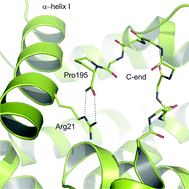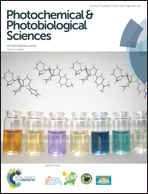Hydrogen-bond networks between the C-terminus and Arg from the first α-helix stabilize photoprotein molecules
Abstract
Previous studies have stated that aequorin loses most of its bioluminescence activity upon modification of the C-terminus, thus limiting the production of photoprotein fusion proteins at its N-terminus. In the present work, we investigate the importance of the C-terminal proline and the hydrogen bonds it forms for photoprotein active complex formation, stability and functional activity. According to the crystal structures of obelin and aequorin, two Ca2+-regulated photoproteins, the carboxyl group of the C-terminal Pro forms two hydrogen bonds with the side chain of Arg21 (Arg15 in aequorin case) situated in the first α-helix. Whereas, deletion or substitution of the C-terminal proline could noticeably change the bioluminescence activity, stability or the yield of an active photoprotein complex. Therefore, modifications of the first α-helix Arg has a clear destructive effect on the main photoprotein properties. A C-terminal hydrogen-bond network is proposed to be important for the stability of photoprotein molecules towards external disturbances, when taking part in the formation of locked protein conformations and isolation of coelenterazine-binding cavities.


 Please wait while we load your content...
Please wait while we load your content...